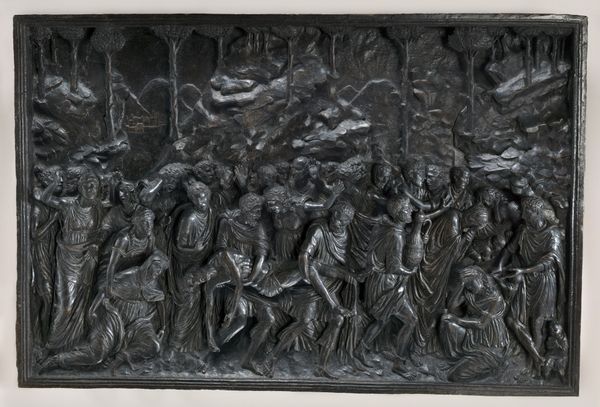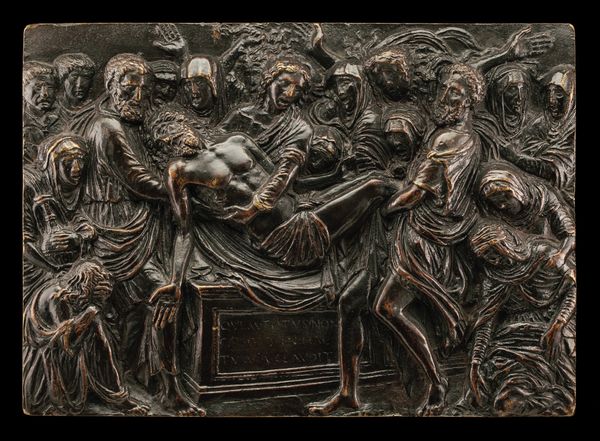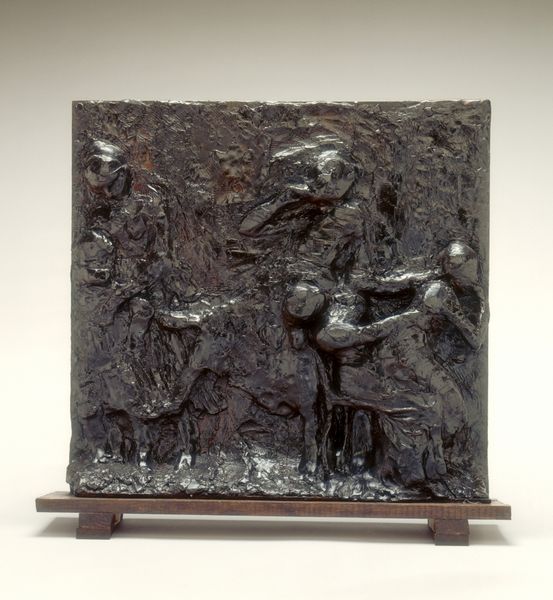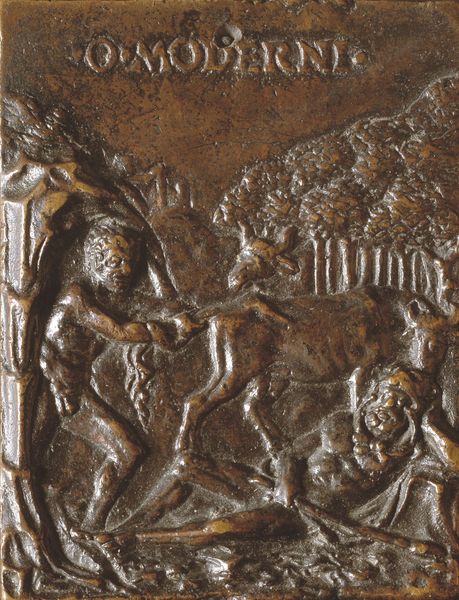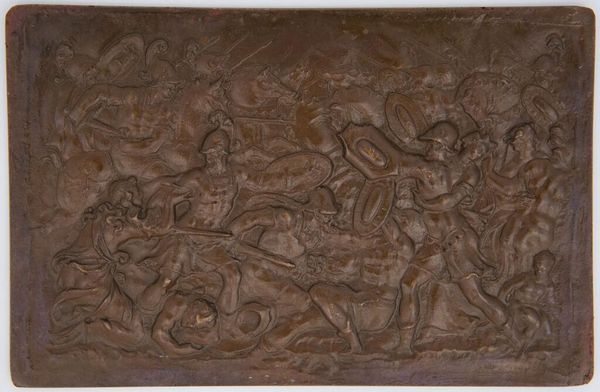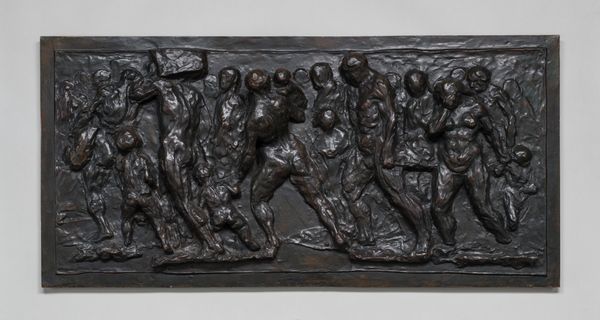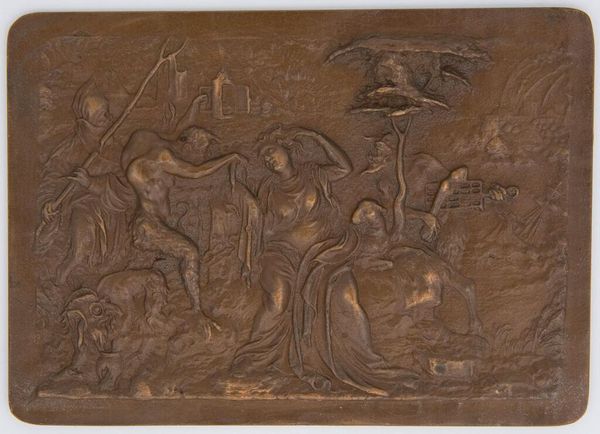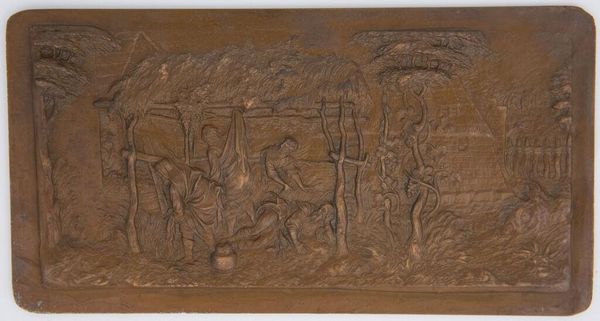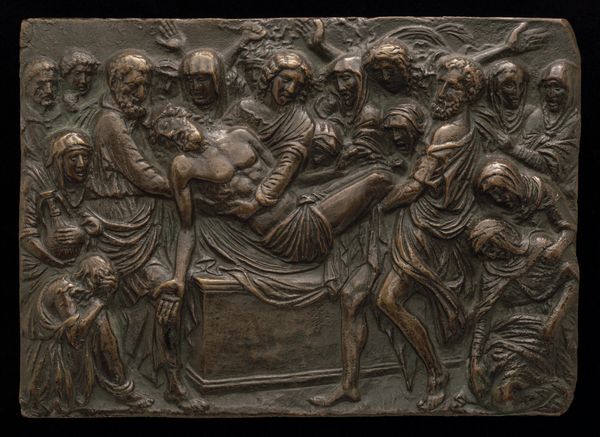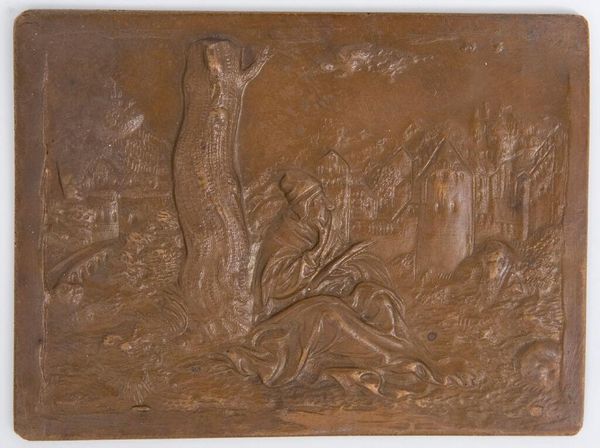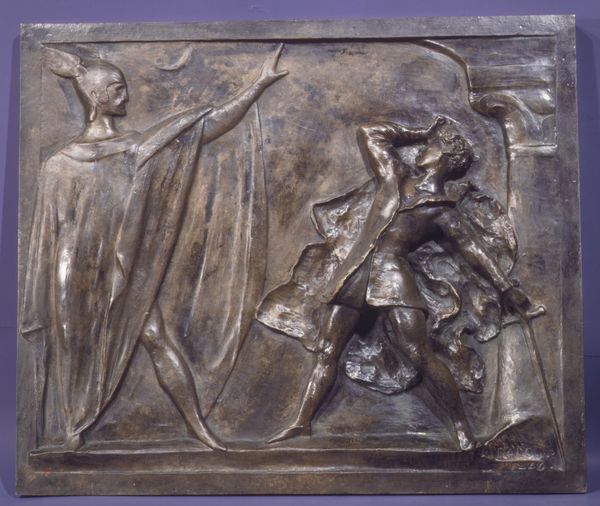
relief, bronze, sculpture
#
impressionism
#
sculpture
#
relief
#
bronze
#
sculptural image
#
figuration
#
sculpture
#
group-portraits
#
france
Dimensions: 17 3/4 x 18 3/4 x 2 1/2 in. (45.1 x 47.6 x 6.4 cm)
Copyright: Public Domain
Editor: This is Edgar Degas’s “Picking Apples,” created around 1881. It’s a bronze relief, and, honestly, at first glance, the figures are a little difficult to discern. What do you see in this piece beyond the obvious title? Curator: I see a layered story being told. Apple picking, a seemingly simple task, resonates deeply within our collective cultural memory. Think of Eve in the Garden of Eden, the apple of temptation, of knowledge, of the loss of innocence. Do you see any of those concepts represented? Editor: I do see what might be several figures… are some of them reaching high? And is one holding an apple? Curator: Yes. Note the relief—Degas isn’t just showing us figures picking apples; he's using the bronze itself, the very *material* of the piece, to symbolize an enduring narrative. Consider bronze’s historical significance, its association with commemoration, with strength and permanence. Degas may be implying the enduring qualities of labor, family, even transgression. It echoes in ways you might not immediately recognize, a constant echo of these archetypes. Does the composition of the sculpture lend weight to my claims? Editor: The way they are so close, working together... it does feel communal and almost timeless. The ruggedness of the bronze itself lends to that idea, I think. It definitely carries a sense of weight. Curator: Precisely. It transcends a mere snapshot of rural life; Degas is actively engaging with and reshaping longstanding narratives that are still rooted in today's imagery. The bronze relief elevates a simple activity into an examination of our complex relationship with nature, temptation, and, ultimately, knowledge. Editor: I wouldn't have made those connections on my own, but the symbols and texture seem really key once they are pointed out. I can appreciate it much more.
Comments
minneapolisinstituteofart almost 2 years ago
⋮
During his lifetime, Edgar Degas exhibited only one of his wax sculptures and cast three in plaster. Immediately after his death, 72 of his waxes were cast in bronze editions of 22 to 25 examples each. Given the scarcity of documentary evidence, the original dates of execution for nearly all the waxes are simply not known.
Join the conversation
Join millions of artists and users on Artera today and experience the ultimate creative platform.
